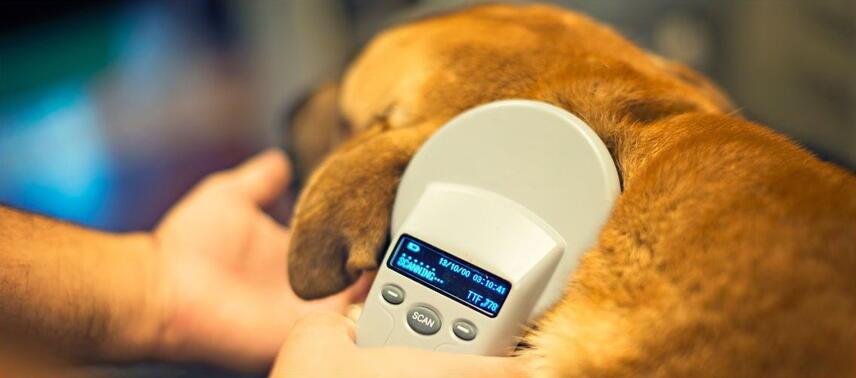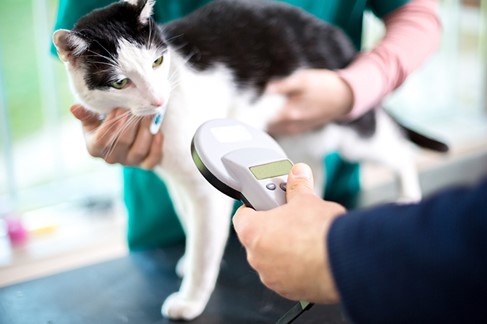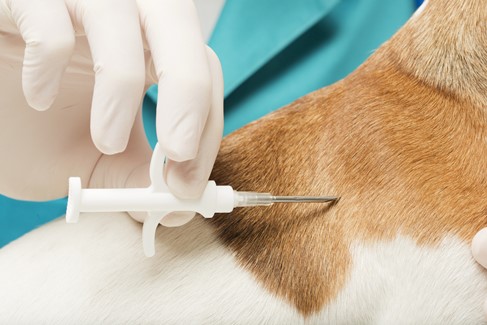El número de animales
no deja de crecer
Publicado: 4 feb. 2020

Chipping is currently the most effective method of marking companion animals. It has been gaining popularity among both owners and breeders who care about the safety of their four-legged, two-legged and often also underwater pets. However, animal identification is a subject that is still relatively poorly understood and fraught with misconceptions resulting primarily from a lack of reliable and clear information on the topic.
What should you do to mark your pet in a simple and effective manner to ensure its complete safety?
Here are a few simple steps you can take to ensure the lifelong safety of your animal.

This is absolutely NECESSARY as no animal should ever be microchipped twice. Just imagine a situation where you do not bother to check if your pet has a chip and you have it implanted with another transponder. You then want to go abroad and the microchip found by the customs official is not the one entered into the animal's passport!
Use a tested microchip reader to find out whether your pet has a microchip – use it to thoroughly scan places where microchips are usually implanted, that is the left side of the animal's neck and between the scapulas. If you do not have your own reader, ask your veterinary clinic for help as it should be equipped with one. If no microchip has been found, but you are not sure if the animal has not been chipped, you can always have your pet X-rayed to see if it has a transponder.

If you determine that your pet does not have a microchip, you should mark your animal with one as soon as possible!
Visit an experienced veterinarian who will implant a transponder quickly and stress-free. Make sure to use a microchip reader to see if the chip is working, and make another reading the next day to make sure it has been implanted properly and has not fallen out due to bleeding or not being implanted deep enough. It is a good idea to pinch the place the chip was implanted right after the procedure to ensure the wound closes.
Save the barcodes which came with the kit as they will come in handy when you want to register the chip and apply for a passport for your pet, for example.
If you determine that your pet has a microchip, read and memorise (or write down) its number and check a database of electronically marked animals to see if an animal with that microchip number has already been registered by its previous owner, breeder or the veterinarian who chipped it.
If the animal is already registered, make sure that all the information is accurate and up to date. If necessary, correct the data yourself or ask the administrator to correct them for you.
If the animal is not registered in any database, make sure to remedy that as soon as possible.

Remember that implanting a transponder IS NOT ENOUGH TO ENSURE THE SAFETY OF YOUR PET. A microchip only contains a unique fifteen-digit code, and to make identification effective, it must be assigned to a person. If you fail to do so, reading the chip number will be insufficient to determine the owner of the animal and will not help the pet return home faster.
You should also keep in mind that A MICROCHIP IS NOT A GPS TRACKER! It cannot be used to track or locate your animal, for example.
To finalise the marking process and make it truly effective, you need to register the microchip in a database integrated with WPN. Remember to enter accurate contact data and address, which will allow the finder to quickly and easily find and contact you.
Remember to keep your contact data such as address, phone number and email up to date. Neglecting this may make it harder for the person who finds your pet to find you, which means it will take longer for your friend to return home, exposing it to unnecessary stress.
If your pet has a microchip, it is a good idea to attach a tag to its collar containing information about being marked in this way and containing the name of the database in which it is registered.
You can speed up the pet identification process by giving it an NFC tag, which can contain important information about the animal and the contact data of its owner.
However, please keep in mind that an address tag will never be as effective as marking your pet permanently with a microchip. A tag can be lost or detach itself when the dog is playing or by a thief, which is why it should only be used as an additional security measure to speed up the identification process and make it possible to start searching for the owner faster.
If you follow our tips, you can now enjoy spending time with your pet knowing that you have done everything possible to ensure its maximum safety in a low-cost, simple way!



La identificación electrónico de animales mediante microchip es el método más duradero, eficaz y seguro para permitir la identificación rápida y fiable de tu mascota. Solamente con el número único del transpondedor (chip) se puede identificar el animal al instante y encontrar a su dueño, haciendo que la mascota pueda regresar a su hogar. No obstante, hay que tener en cuenta que el microchip no es más que un transpondedor con un número codificado. El microchip no cuenta con una función de localización ni tampoco incluye información acerca del dueño ni del propio animal. Así pues, para poder identificar al perro o al gato con identificación mediante chip, el microchip tiene que estar registrado en una base de datos nacional de animales identi...
Leer más